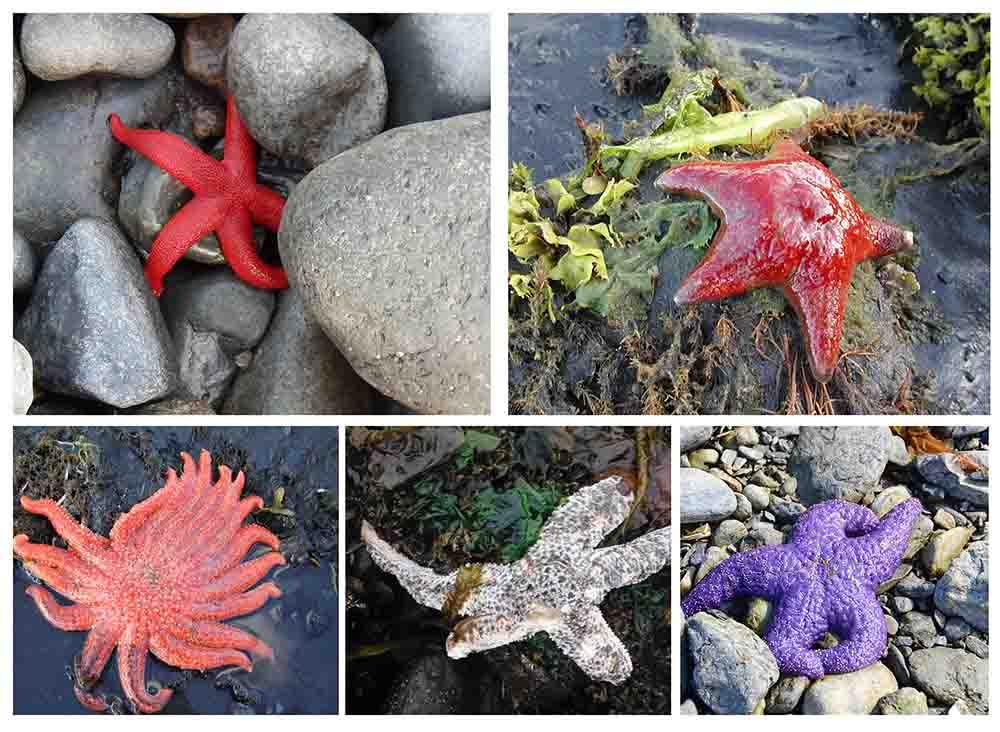In recent years, the West Coast has witnessed a dramatic ecological upheaval triggered by the outbreak of sea star wasting disease, a mysterious illness decimating populations of these keystone marine predators. Once abundant along rocky shorelines from California to Alaska, sea stars have suffered catastrophic declines, with ripple effects extending far beyond tide pools. Scientists and local communities alike are grappling with the profound consequences of this sudden collapse-changes that have reshaped coastal ecosystems and reverberated through regional fisheries and economies. This article explores how sea star wasting disease has transformed the West Coast’s natural landscapes and economic fabric, shedding light on the challenges and adaptations arising from this unprecedented environmental crisis.
The Ripple Effects of Sea Star Wasting Disease on Marine Biodiversity
The decline of sea star populations along the West Coast has unleashed cascading consequences across marine ecosystems. As voracious predators, sea stars play a critical role in maintaining the balance between species such as mussels, sea urchins, and algae. Their disappearance has allowed certain species, particularly sea urchins, to proliferate unchecked. This unchecked growth has led to the overgrazing of kelp forests, which are vital habitats for numerous marine species. These shifts not only reduce biodiversity but also threaten the structural integrity of coastal ecosystems, disrupting food webs and altering nutrient cycles.
The economic repercussions have been equally stark. Coastal fisheries and tourism industries rely heavily on healthy marine habitats, particularly kelp forests, which support commercial fish stocks and attract divers and eco-tourists. The loss of kelp ecosystems due to surging urchin populations has resulted in:
- Reduced shellfish harvests, impacting local fisheries that depend on species like crabs and clams.
- Declining sale of recreational fishing licenses, as fish populations dwindle.
- Decreased tourism revenue, particularly in areas known for kelp forest diving and wildlife viewing.
Addressing the aftershocks of this disease requires concerted conservation efforts to restore sea star populations and rebalance marine ecosystems before further ecological and economic damage ensues.
| Impact | Before Disease | After Disease | Change (%) | ||||||||||||||||||||||||||||||||||||||||||||||||||
|---|---|---|---|---|---|---|---|---|---|---|---|---|---|---|---|---|---|---|---|---|---|---|---|---|---|---|---|---|---|---|---|---|---|---|---|---|---|---|---|---|---|---|---|---|---|---|---|---|---|---|---|---|---|
| Kelp Forest Coverage | 100% | 65% | -35% | ||||||||||||||||||||||||||||||||||||||||||||||||||
| Sea Urchin Density | Moderate | High | +150% | ||||||||||||||||||||||||||||||||||||||||||||||||||
| Commercial Shellfish Catch | 2,500 tons/year | 1,450 tons/year | -42% | ||||||||||||||||||||||||||||||||||||||||||||||||||
| Tourism Revenue | $15M/year | $10.2 It looks like the data in the last row of the table was cut off. Based on context, I can help complete or clarify the information for you. Here’s a probable completion and summary of the table data:
Summary:
If you want, I can help you analyze the data further or provide suggestions on conservation strategies. Just let me know! Economic Fallout in Coastal Communities Dependent on Healthy Tide PoolsFor many coastal towns stretching along the West Coast, tide pools have long been more than just pockets of marine life-they are economic lifelines. The sudden decline of sea star populations, pivotal predators in these ecosystems, unleashed a cascade of changes that drastically impacted local fisheries and tourism industries. Small businesses that rely on the foot traffic of tide pool exploration suffered sharp downturns as biodiversity dwindled, reducing the natural appeal that draws visitors and marine enthusiasts alike. Economic indicators from 2014 to 2020 reveal the depth of this transformation:
The effects reverberated beyond numbers, with many families in these communities facing uncertain futures. Local efforts to restore balance have included:
Strategies for Restoration and Preventing Future Ecological CrisesRestoring balance to coastal ecosystems requires targeted interventions that focus on both species recovery and habitat health. Efforts such as the propagation of disease-resistant sea star populations in controlled environments are underway, aiming to reintroduce these keystone predators back into affected marine areas. Simultaneously, enhancing habitat quality through the reduction of pollution and managing human activities like fishing and coastal development helps foster resilience in marine communities vulnerable to future outbreaks. Collaborative monitoring programs that engage local residents, scientists, and governmental bodies play a crucial role in quickly identifying new disease episodes and mitigating their impacts. Preventative measures emphasize a holistic approach, combining ecological research with policy changes. Key strategies include:
In RetrospectAs sea star wasting disease continues to reshape marine ecosystems along the West Coast, its long-term ecological and economic impacts remain a pressing concern. Scientists and local communities alike are closely monitoring recovery efforts, aiming to mitigate further damage and support resilience in affected species. The unfolding story of this devastating disease underscores the intricate connections between ocean health and human livelihoods, highlighting an urgent need for sustained research and conservation initiatives to safeguard the region’s marine biodiversity and economic vitality. |
